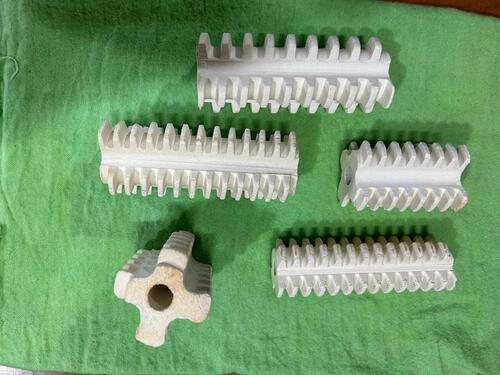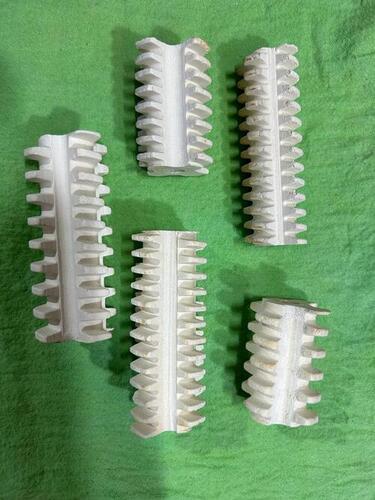
Ceramic air Bobbin
Product Details:
- Length customize Inch (in)
- Size customize
- Product Type bobin
- Usage melting Furness, oven furness
- Color white and brown
- Height customize Inch (in)
- Material Specified Air Heating Elements
- Click to View more
Ceramic air Bobbin Price And Quantity
- 45 INR/Piece
- 2000 Piece
Ceramic air Bobbin Product Specifications
- bobin
- melting Furness, oven furness
- customize
- customize Inch (in)
- white and brown
- customize Inch (in)
- Air Heating Elements
Ceramic air Bobbin Trade Information
- mundra
- Cash Advance (CA) Cash in Advance (CID) Cheque
- 5000 Piece Per Week
- 7 Days
- Yes
- Free samples are available
- Chandigarh Dadra and Nagar Haveli Himachal Pradesh Manipur Meghalaya Pondicherry Andaman and Nicobar Islands Uttarakhand Delhi South India North India East India West India Assam Arunachal Pradesh Bihar Daman and Diu Gujarat Goa Haryana Jammu and Kashmir Jharkhand Karnataka Kerala Lakshadweep Madhya Pradesh Maharashtra Mizoram Nagaland Odisha Rajasthan Sikkim Tamil Nadu Telangana Tripura West Bengal Uttar Pradesh Punjab Andhra Pradesh Central India Chhattisgarh All India
- ISO 9001:2015 WHO_GMP ENVIROMENT 14001:2015
Product Description
Furnace refractories are materials used to line the interior of high-temperature furnaces, boilers, and other thermal processing equipment to protect the structure from the extreme heat and chemical corrosion. Refractories are typically made from non-metallic minerals such as clay, alumina, and silica, and can withstand temperatures of up to 1800 C.
There are several types of refractory materials used for furnace linings, including:
Fireclay: Made from clay and other minerals, fireclay is a common refractory material used in low-temperature furnaces.
Silica: Silica refractories are made from silica sand and can withstand temperatures of up to 1700 C. They are used in glass-making furnaces, steel-making furnaces, and other high-temperature applications.
Alumina: Alumina refractories are made from aluminum oxide and can withstand temperatures of up to 1800 C. They are used in furnaces for making ceramics, glass, and steel.
Magnesia: Magnesia refractories are made from magnesium oxide and can withstand temperatures of up to 2000 C. They are used in high-temperature furnaces for making iron, steel, and other metals.
Carbon: Carbon-based refractories are made from graphite or carbon black and can withstand temperatures of up to 3000 C. They are used in electric arc furnaces for melting steel and other metals.
The choice of refractory material depends on the specific furnace application, operating temperature, and other factors such as thermal shock resistance and chemical compatibility with the process materials.

Price:
- 50
- 100
- 200
- 250
- 500
- 1000+



 Send Inquiry
Send Inquiry Send SMS
Send SMS Call Me Free
Call Me Free
